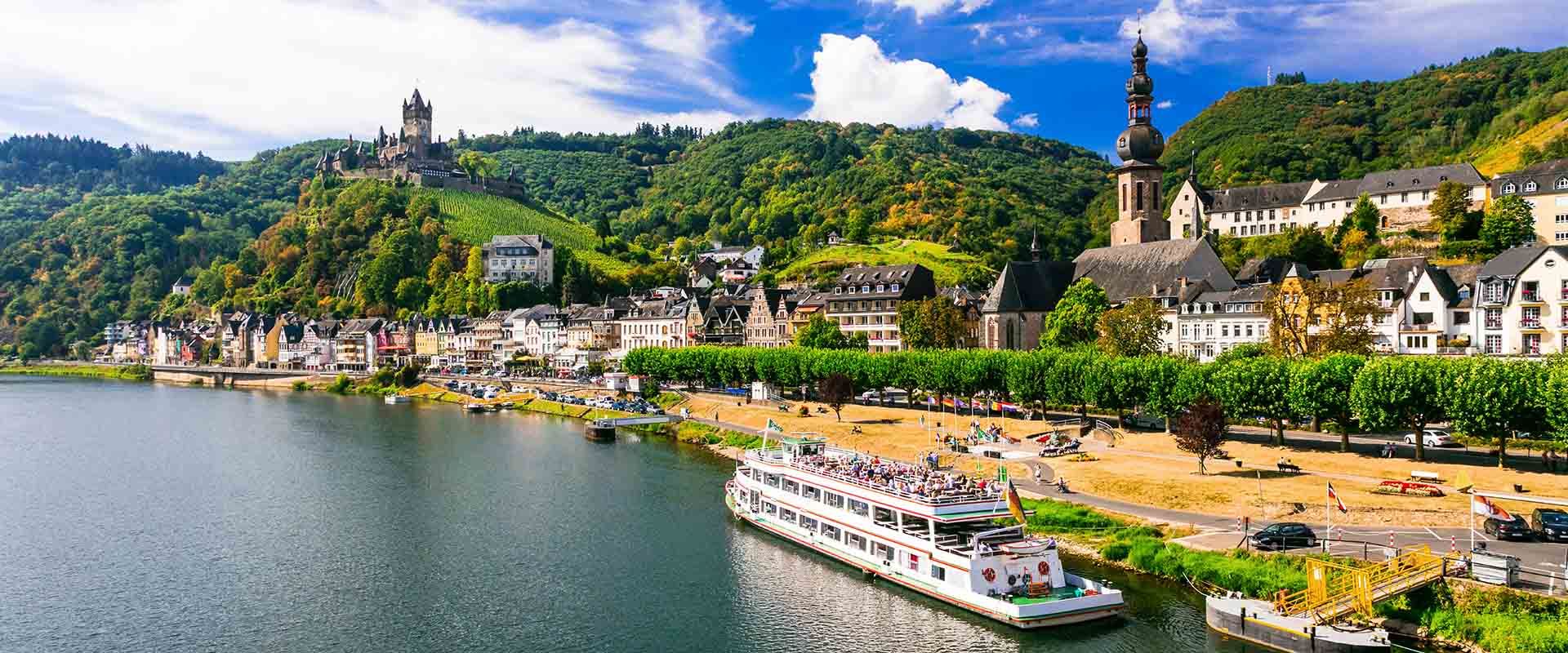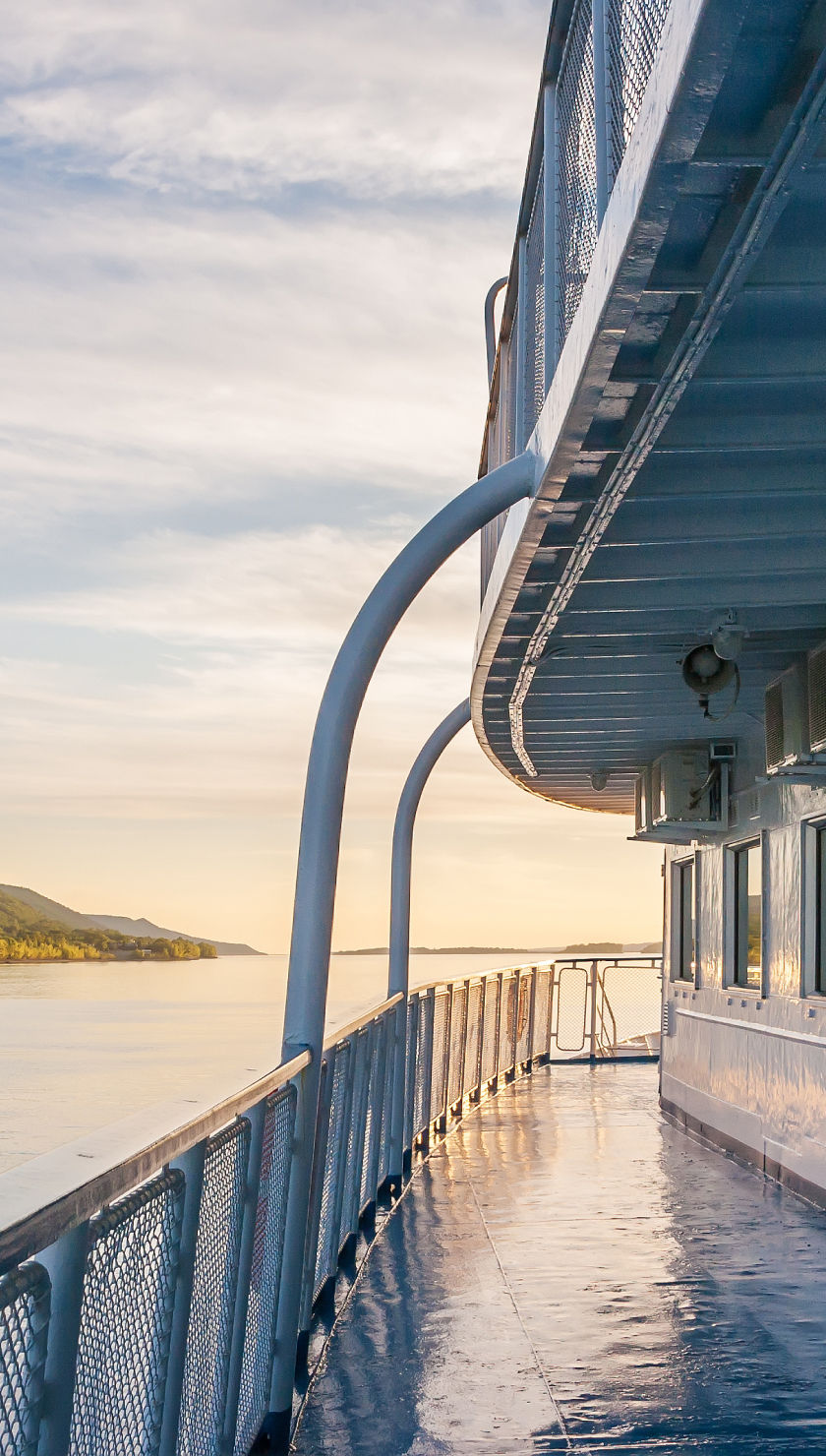Discovering Germany's Riverfront Treasures by River Cruise
Rivers like the Rhine, Danube, Moselle, Elbe, and Main are liquid highways to a treasure trove of Germany's cultural and historical gems. A river cruise along these waterways unveils a panorama of Germany's most captivating towns, each a unique chapter in the nation's story.
Cologne's Gothic Architecture
When a Rhine river cruise includes Cologne, passengers are treated to a city that blends ancient history with modern vibrancy. The city's skyline is dominated by the awe-inspiring Cologne Cathedral, a UNESCO World Heritage site and a masterpiece of Gothic architecture. Exploring the old town reveals a maze of charming streets, historical buildings, and buzzing squares. The city also boasts a thriving cultural scene, with numerous museums, galleries, and a lively atmosphere.
Highlights: Cologne Cathedral, Old Town exploration
Baroque Buildings of Bavaria: Passau
Travelers embarking on a journey along the Danube often find themselves in Passau, where three rivers converge. This Bavarian gem, known for its Baroque architecture, boasts St. Stephen's Cathedral, home to one of the world's largest cathedral organs. The Veste Oberhaus, a formidable fortress, overlooks the city, offering panoramic views of the confluence of the Danube, Inn, and Ilz rivers.
Highlights: St. Stephen's Cathedral, Veste Oberhaus, Three Rivers confluence views
Bamberg and Beer Culture
On the banks of the Main River, a city steeped in history and beer culture awaits. Bamberg is a UNESCO World Heritage site famous for its smoked beer and the impressive aptly named Bamberg Cathedral. The Altes Rathaus, perched on an island in the middle of the Regnitz River, is another iconic landmark. This city's medieval charm is evident in its narrow, winding streets and well-preserved architecture.
Highlights: Bamberg Cathedral, Altes Rathaus, smoked beer
Beilstein: The Sleeping Beauty of the Moselle
Tucked along the Moselle River, Beilstein enchants visitors with its medieval charm and timeless beauty. Known as the “Sleeping Beauty of the Moselle,” this village boasts cobblestone streets, half-timbered houses, and the ruins of Metternich Castle overlooking the river. A cruise stop here offers a step back in time amidst vineyards and historic architecture.
The History of Heidelberg
Sailing on the Neckar River, one encounters a city renowned for its prestigious university and romantic atmosphere: Heidelberg. The imposing Heidelberg Castle, a red sandstone ruin, dominates the skyline, offering breathtaking views of the Neckar Valley. With its iconic gate, the Old Bridge is a must-see, as is the Hauptstrasse, lined with shops and cafes. As the Neckar is a tributary of the Rhine, Heidelberg can be visited via a Rhine river cruise.
Highlights: Heidelberg Castle, Old Bridge, Heidelberg University
Karlsruhe: A Cultural Gem on the Rhine
Situated on the Rhine, Karlsruhe is a city where innovation meets tradition.The fan-shaped layout centers around the majestic Karlsruhe Palace, home to the Baden State Museum. Art enthusiasts can explore the Staatliche Kunsthalle, featuring works from German and French masters. River cruises often include stops here, allowing travelers to experience the city's rich cultural offerings and vibrant atmosphere.
Koblenz: Where Moselle Meets the Rhine
Koblenz has a rich Roman history and strategic importance at the confluence of the Rhine and Moselle rivers. The Deutsches Eck, where the two rivers meet, is a striking landmark. Ehrenbreitstein Fortress, accessible by cable car, provides stunning views of Koblenz and the surrounding area. The city's charming old town, with its narrow streets and historic buildings, invites exploration.
Highlights: Deutsches Eck, Ehrenbreitstein Fortress, Rhine and Moselle confluence
Wertheim
Wertheim is a town with a distinctly medieval atmosphere where the Tauber meets the Main River. The Wertheim Castle ruins, perched high above the city, offer panoramic views of the surrounding countryside. The historic Marktplatz, with its half-timbered houses, is a delightful place to stroll and soak in Wertheim's charm.
Highlights: Wertheim Castle ruins, Marktplatz, Tauber and Main confluence
Wiesbaden: Elegance and Wellness by the River
Wiesbaden, one of Europe's oldest spa towns, exudes elegance with its neoclassical architecture and therapeutic hot springs. The Kurhaus, an Art Nouveau masterpiece, serves as the city's social hub, housing a renowned casino and concert halls. Visitors can stroll through the Nerotalanlagen park or explore the historic Schlossplatz. A river cruise stop in Wiesbaden offers a blend of relaxation, culture, and architectural beauty.
Regensburg's Roman Heritage
Traveling along the Danube, the city of Regensburg beckons with its rich Roman heritage and well-preserved medieval architecture. The Stone Bridge, a 12th-century marvel, spans the Danube, connecting the old town to the Stadtamhof district. St. Peter's Cathedral is a prominent landmark with its impressive Gothic architecture. The city's energetic atmosphere and numerous beer gardens make it a delightful place to explore.
Highlights: Stone Bridge, St. Peter's Cathedral
Mainz and The Advent of Movable Type
Located on the Rhine River, Mainz is known for its rich history and cultural significance. The Gutenberg Museum, dedicated to the inventor of the printing press, is a major attraction. The Mainz Cathedral, a thousand-year-old architectural masterpiece, dominates the skyline. The city's busy market square and numerous wine taverns offer a taste of local life.
Highlights: Gutenberg Museum, Mainz Cathedral
Würzburg
Würzburg is renowned for its Baroque architecture and wine culture. The Residenz Palace, a UNESCO World Heritage site, is a stunning example of Baroque design. The Marienberg Fortress, overlooking the city, provides panoramic views of the Main River Valley. The city's numerous wine cellars and vineyards offer wine-tasting and exploration opportunities.
Highlights: Residenz Palace, Marienberg Fortress, Main Valley
The Lifeline of Germany
Germany's most iconic river, the Rhine, is a natural starting point for any German river cruise. Cologne, a major city along the Rhine, demands exploration. Marvel at the awe-inspiring Cologne Cathedral, a UNESCO World Heritage site. Wander through the charming old town and indulge in a Kölsch beer at a traditional brewery. Further along, the Rhine Gorge unfolds, a UNESCO World Heritage site famed for its steep vineyards, numerous castles, and the Loreley Rock. The magnificent Marksburg Castle, a well-preserved medieval fortress perched high above the river, is a must-see, a testament to Germany's rich history and architectural heritage.
Highlights: Cologne Cathedral, Marksburg Castle, and the captivating region of the Rhine Gorge
Europe's Longest River
Another major German waterway, the Danube, flows through the southern part of the country. Passau, where the Danube, Inn, and Ilz rivers meet, is a picturesque city with a rich baroque architecture and a charming old town. Regensburg, a UNESCO World Heritage site, boasts a well-preserved medieval center, including the Stone Bridge, a 12th-century marvel. Experience the Bavarian way of life, sample local beers, and immerse yourself in the atmosphere of a region renowned for its history and culture.
Highlights: Passau's Three Rivers confluence and the Stone Bridge in Regensburg
The Moselle
The Moselle River, a tributary of the Rhine, meanders through a scenic valley known for its vineyards and charming villages. Trier, Germany's oldest city, boasts impressive Roman ruins, including the Porta Nigra, a monumental city gate. Cochem, a picturesque town on the Moselle, is famous for its Reichsburg Castle, perched on a hill overlooking the river. Enjoy exploring the charming streets and savoring Moselle wines.
Highlights: Porta Nigra (Trier) and Reichsburg Castle (Cochem)
Where East Meets West
Venturing further along, a German river cruise adventure might also take you to the Elbe River. Dresden, often referred to as "Florence on the Elbe," is renowned for its stunning Baroque architecture, including the Zwinger Palace and the Frauenkirche. Meissen, famous for its porcelain, offers a glimpse into Germany's artistic heritage. Explore the historic old towns and experience the unique blend of culture and history.
Highlights: Zwinger Palace and Frauenkirche (Dresden), and Meissen porcelain
Flowing Through Franconia
The Main River, a significant tributary of the Rhine, offers a journey through the heart of Franconia. Würzburg, with its magnificent Residenz Palace, a UNESCO World Heritage site, is a highlight. Bamberg, another UNESCO site, boasts a well-preserved medieval old town and unique breweries. This river connects major cities with charming smaller towns, providing a diverse experience of German culture and history.
Highlights: Residenz Palace (Würzburg), Bamberg











